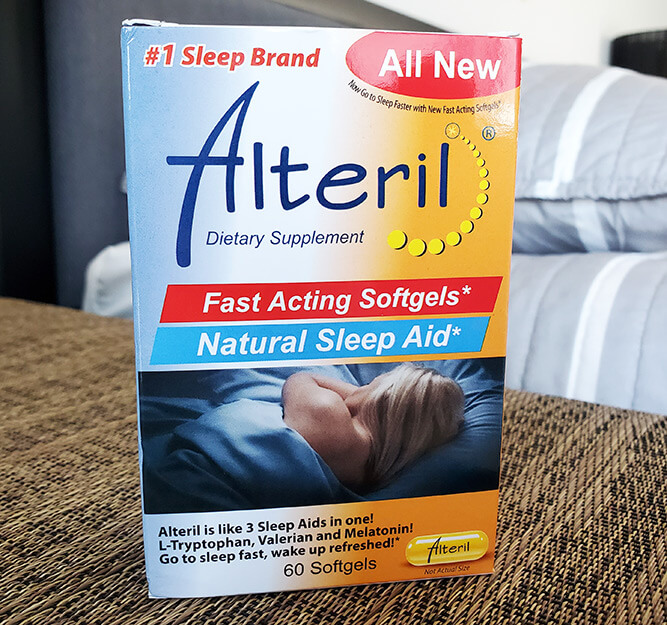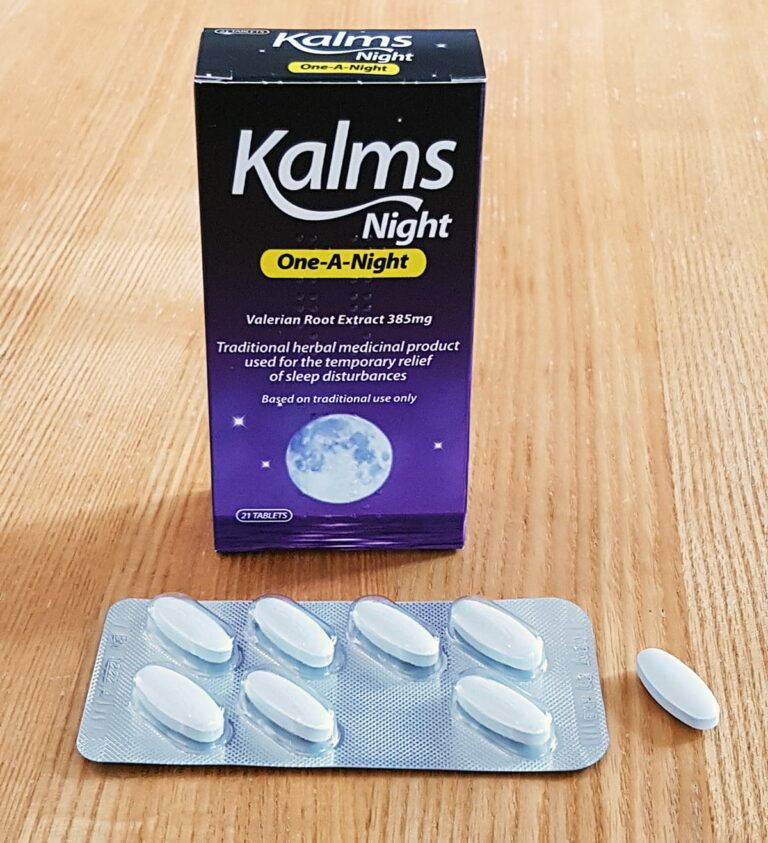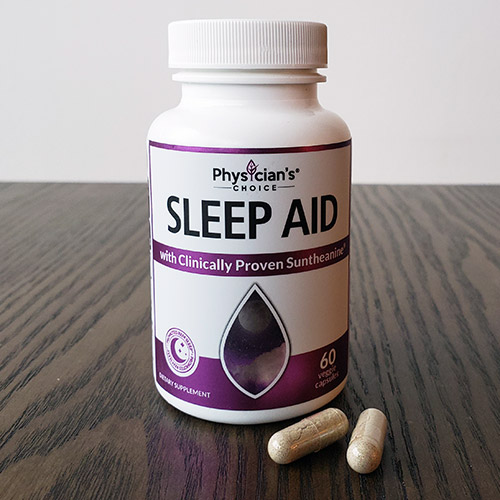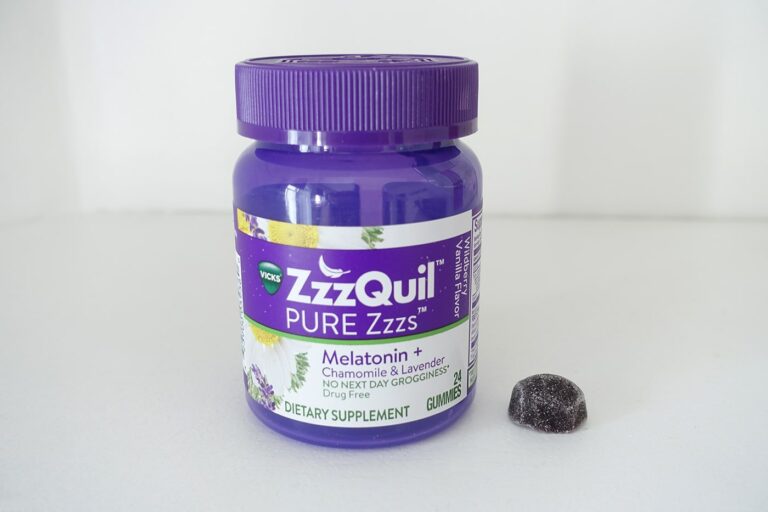
Disclosure: This review is based on my personal experience of taking the Alteril sleep aid, and you may have a different experience. Please discuss taking any new sleep aid with a healthcare professional rather than only relying on online sources.
Updates: I first wrote this article in 2020 when I tried Alteril. The most recent update in 2024 was to remove the warnings and side effects listed on the pack I bought, and replace them with suggestions of where to find current safety information.
For the last week, I’ve been testing the sleep aid Alteril every night. It’s an over the counter sleep aid that’s sold online and in many big stores in the United States, such as Target, Amazon, Walmart, and CVS.
Overall, I was content with how well it worked for me. I’ve had good results from other sleep aids containing melatonin, so I did have some expectations it might help.
But before you wonder if I’ve heard of the placebo effect (which is kind of useful anyway), this was the first time I’ve taken a sleep aid with the specific combination of melatonin, L-tryptophan, valerian, and chamomile.
So in this review, I’ll be talking first about my experience of taking Alteril for seven nights, and then take a look at the ingredients.
My experience
I bought my pack of Alteril from the local Target, where it cost $18.99 at the time. In the box were four blister packs, each with 15 capsules. There was no instruction leaflet on the inside, and just some basic information about the sleep aid written on the outside of the box.
As you can see in the photo below, the softgels are relatively large for sleep aids and very, very yellow. Perhaps the creators of these mini yellow submarines are fans of the Beatles!

The first night
The instructions were to take two softgels with water an hour before bed. The word ‘softgel’ always makes me think you can chew them, but they are actually capsules that you have to swallow whole.
They went down easily with water, but I can imagine people who struggle to swallow larger pills/capsules/softgels might be put off by the size; I measured them at just under an inch long.
After taking them, I lay in bed and read for a while. I don’t usually expect to feel drowsy with over the counter sleep aids as they tend to have a relatively mild effect for me – if I even notice an effect at all. But I felt distinctly drowsy after around 45 minutes, so turned off the light and fell asleep quickly.
Confused waking in the night
I woke up twice in the night, albeit briefly. Once because there was a storm and the wind was blowing in through the window. I vaguely remember getting up, stumbling to the window and closing it while making a racket with the blinds. I was either still half-asleep or very drowsy.
The second time was for a bathroom trip. I have almost no memory of it other than the fact that it happened. So my two wakings were both brief and drowsy.
Fine in the morning
I felt like I slept well the first night, despite the short wakings, and woke up feeling fine too. There was no grogginess, no headache or other noticeable side effects that sometimes accompany sleep aids. So that’s a positive start.
As I write this I’m feeling content about the effects of Alteril, and it will be interesting to see if I sleep well again for the rest of the week (I wrote this article in stages).
Night two
I again felt noticeably drowsy a while after taking the Alteril, and I again slept well (for me). I only woke once, briefly, and don’t recall feeling disorientated.
I had no side effects or grogginess in the morning, so that’s two good nights in a row.
Nights 3 and 4
The next two nights were quite similar to each other. I slept well overall, but briefly woke up once in the early morning with the sense that I’d been having vivid dreams. I then woke up a bit later, again with the feeling that my dreams had been particularly vivid that night.
I did feel ever so slightly groggy both mornings, but it cleared with a coffee and fresh air while walking the dog.
Nights 5, 6 and 7
For the final three nights of my week long test, I decided to escape the muggy heat of the city and spend a few nights by the beach. Like many people, I take a couple of nights to adjust to a change in bedroom, and the bed in the little place I rented was small and not particularly comfortable.
This made it an ideal time to see if the Alteril would help when my circumstances were more likely to disrupt my sleep.
As it turned out, I continued to sleep fairly well. To be fair, I did a lot of swimming and it was good to get out of the city and breathe fresh air for a change. So perhaps that also helped me feel relaxed enough to sleep in the new place, despite the bed.
However, I’m sure I felt drowsy while reading after taking the Alteril sleep aid. Not ‘tired from activity’ drowsy, but ‘tired from feeling sedated’ drowsy. So for me, the Alteril had a positive effect.
There was a little bit of grogginess in the morning, but it didn’t get any worse as the week progressed, and was relatively minimal overall. I suspect that if I wasn’t being so vigilant because of this test, I would have just shaken it off without much thought. It was in no way as bad a morning hangover as some other sleep aids I’ve tried, and acceptable to me personally.
Verdict
I was impressed by the Alteril sleep aid, despite some initial concerns about the size of the softgels. I could actually feel some sedation, which isn’t always the case with over the counter sleep aids. That gave me some confidence that they were working, rather than it simply being the placebo effect at work. Realistically though, it’s very hard to be sure about that.
The main thing is that I felt like I slept reasonably well every night for the seven nights I took it. When I compared my sleep tracker data for that week to the week before, there was a noticeable increase in total sleep time, and a slight increase in the overall sleep score.
I know you have to take those measurements with a pinch of salt, but in the absence of other measuring tools, it at least provides a little reassurance that the sleep aid did something useful.
One possible concern is the vivid dreams, which I suspect may be down to the melatonin. For me, this wasn’t an issue as I quite enjoy lying in bed remembering vivid dreams. But I know not everyone likes recalling vivid dreams, especially if they aren’t so pleasant.
There were also a couple of incidents of feeling disorientated when waking in the night. So based on my own experience, I would recommend caution if you’re someone who is at risk of falls.
Overall though, I was pleased with the result and the lack of worrying side effects (for me). So this is an over the counter sleep aid I would potentially consider taking again when needed.
Additional information
The ingredients
Please note that I bought my box in August 2020, and the manufacturer may make changes to the ingredients over time.

According to the information on the box, the active ingredients are:
- L-Tryptophan – 200mg
- Melatonin – 4mg
- Blend of Valerian root extract and Chamomile flower extract – 60mg
The other, inactive, ingredients are listed as:
- Rice bran oil
- Gelatin
- Medium chain triglycerides
- Glycerin
- Purified water
- Yellow beeswax
- Sunflower lecithin
- Titanium dioxide
- FD&C yellow #5
- Maltodextrin
- Dextrin
- Silicon dioxide
I’ve seen all four of the active ingredients included in some other sleep aids, so there’s nothing unique or unusual about them.
I’m not going to go into a long analysis of how effective each one is, and what research supports it. What I will say is that I know from personal experience that melatonin seems to work well for me and my sleep problems. Just be aware that it’s not thought to be equally effective for everyone.
I also typically find that valerian and chamomile have a mild effect for me, but it depends on how much is in the sleep aid and how long I take it for.
As for L-tryptophan, I wondered why they chose to combine it with melatonin. My initial thought was that it’s supposed to help with sleep by increasing the amount of serotonin in the body, which is then naturally converted into melatonin. So why not just stick with the melatonin?
Is it a backup plan in case the melatonin in the softgel doesn’t work? Is the hope that it might help improve mood and feelings of relaxation as well as sleep? Or did the manufacturer just think it would appeal to more people if included, i.e. a clever marketing strategy?
What evidence is there that Alteril sleep aid works?
As is usually the case with over the counter sleep aids, I couldn’t find any clinical trials to demonstrate the effectiveness or safety of Alteril specifically. That doesn’t necessarily mean it isn’t safe or effective, just that there’s no research into this particular brand.
There is research into the effectiveness of each of the four principle ingredients – if you search online, you’ll find both medical websites and journals that discuss them. The websites I’ve linked in the further reading section below, for example, discuss the effectiveness.
Short answer: there’s some evidence that they might help some people with some sleep problems.
Furthermore, I couldn’t find any research into what happens when you combine all four ingredients in this quantity and in this way.
Manufacturer warnings and potential side effects
It’s always wise to check with your doctor or a qualified healthcare provider that a sleep aid is safe and appropriate for you to take, even if it’s available over the counter. They can give you personalised advice rather than relying on the label or patient leaflet.
There was no leaflet in the box of Alteril I bought, and a limited number of warnings about who shouldn’t take it and possible side effects.
Alteril is sold as a dietary supplement in the US. Like so many others, that means the FDA regulates it differently than medicines and the requirement to list warnings aren’t as strict.
My understanding is that they are not obliged them to list every possible known warning, precaution, interaction, and side effect of melatonin, valerian, chamomile, or tryptophan.
Further reading
Here are some sources to check yourself if you’d like to learn more about the active ingredients.
All four of the sources discuss all of the ingredients on different pages. So if you haven’t used the sites before, they are all good to cross-reference for further information.
- Melatonin: see the Mayo Clinic expert answer to a question about side effects.
- Tryptophan: WebMD has a page about this.
- Tryptophan: Mount Sinai has an overview of insomnia and sleep aids, and discusses some concerns around tryptophan.
- Valerian: Healthline discusses some possible side effects of valerian.
- Chamomile: Drugs.com has lots of information about chamomile, tryptophan, melatonin and valerian.




